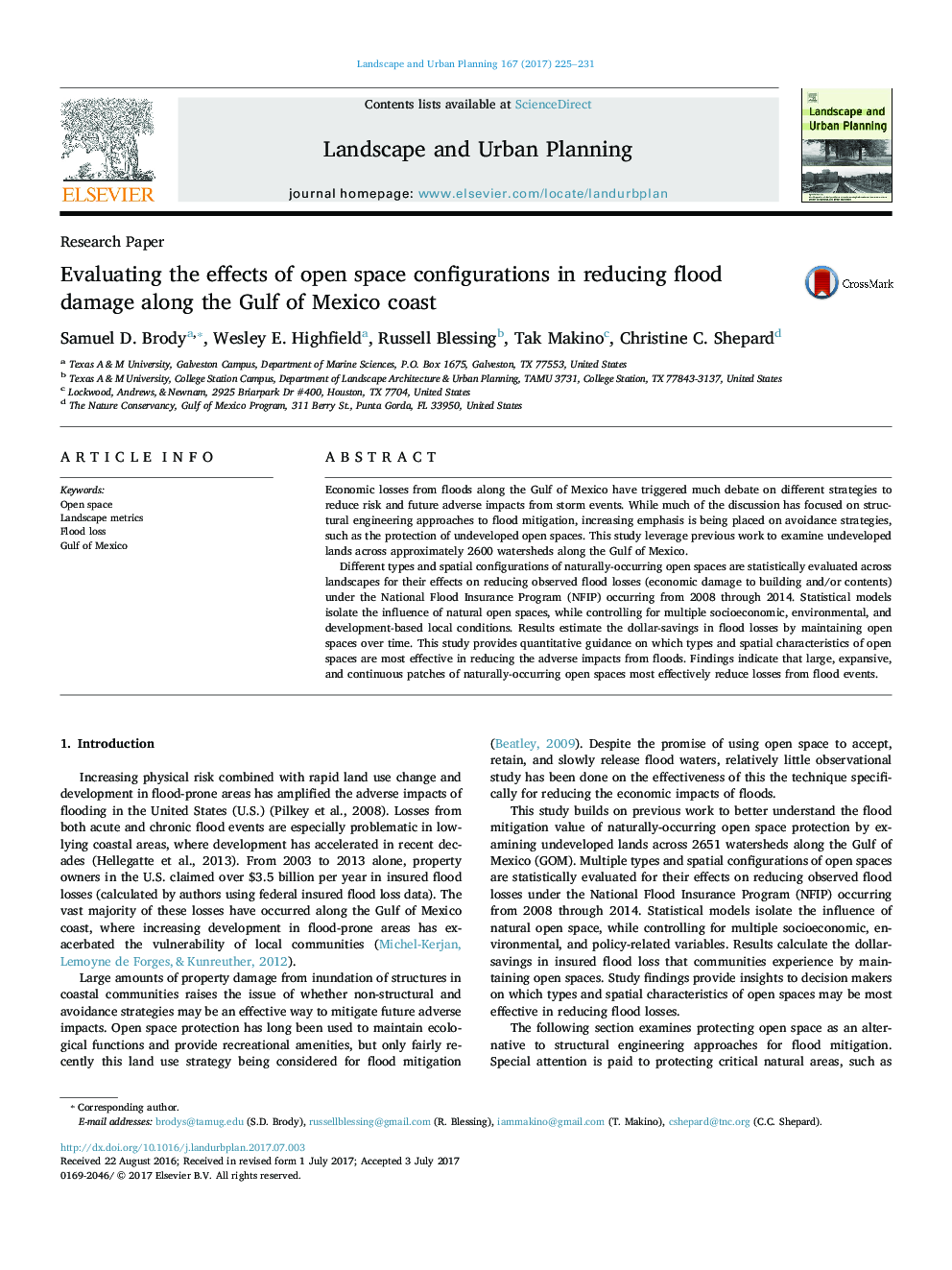| Article ID | Journal | Published Year | Pages | File Type |
|---|---|---|---|---|
| 5114953 | Landscape and Urban Planning | 2017 | 7 Pages |
Abstract
Different types and spatial configurations of naturally-occurring open spaces are statistically evaluated across landscapes for their effects on reducing observed flood losses (economic damage to building and/or contents) under the National Flood Insurance Program (NFIP) occurring from 2008 through 2014. Statistical models isolate the influence of natural open spaces, while controlling for multiple socioeconomic, environmental, and development-based local conditions. Results estimate the dollar-savings in flood losses by maintaining open spaces over time. This study provides quantitative guidance on which types and spatial characteristics of open spaces are most effective in reducing the adverse impacts from floods. Findings indicate that large, expansive, and continuous patches of naturally-occurring open spaces most effectively reduce losses from flood events.
Related Topics
Life Sciences
Agricultural and Biological Sciences
Ecology, Evolution, Behavior and Systematics
Authors
Samuel D. Brody, Wesley E. Highfield, Russell Blessing, Tak Makino, Christine C. Shepard,
